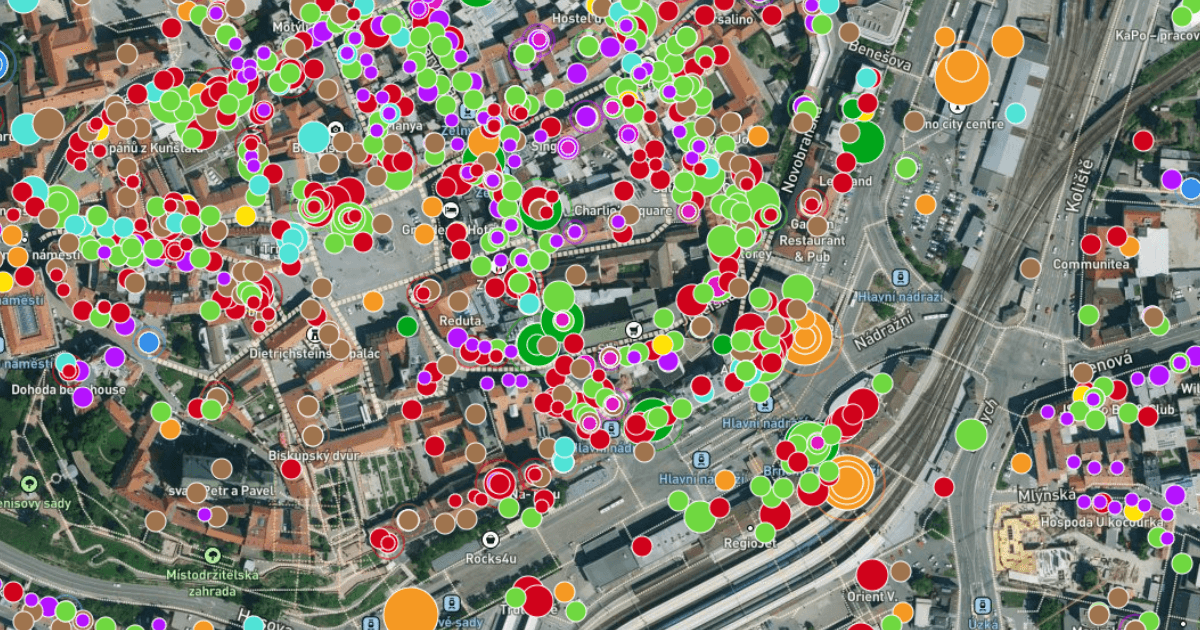
Barbora Hinnerova
SOLUTIONS
5 MINS READ
How to Find White Spaces for Your Business Using Location Intelligence
Discover how to identify untapped market opportunities using Location Intelligence. Learn from real-world examples and start your own white space analysis.
When a market feels saturated, it doesn’t always mean there’s no room for growth. Sometimes, the biggest opportunities hide in plain sight — in the form of white spaces.
White space analysis helps businesses uncover untapped or underserved areas where demand exists but current coverage or supply is lacking. By utilizing Location Intelligence, organizations can unify data and gain improved insights, ultimately delivering significant business value. Whether you’re in FMCG, retail, telco, or QSR, identifying these pockets can lead to significant market expansion.
Why CRM Is Not Enough for White Space Analysis
CRM systems provide valuable data about existing customers — their customer profiles, purchase history, and interactions with your business. However, they often lack spatial context and insights into untapped market areas. White space analysis requires a broader perspective that integrates external data such as demographics, footfall patterns, competitor locations, and mobility trends. By combining CRM data with Location Intelligence, businesses can identify areas of unmet demand, spot emerging opportunities, and plan more targeted expansions.
Introduction to Location Intelligence
Location intelligence is a powerful tool that allows you to use geographic information to gain valuable insights and make informed decisions. By analyzing and visualizing geospatial data, businesses can uncover patterns, trends, and relationships that might otherwise go unnoticed.
It goes beyond traditional Business Intelligence that relies solely on CRM data, allowing organizations to expand their understanding of customers, markets, and operations, ultimately driving growth and improvement.
With location data, companies can develop targeted strategies, enhance customer experiences, and increase revenue, making Location Intelligence a critical component of modern business strategy.
What Is White Space Analysis?
White space analysis is the process of finding geographic or strategic areas where your product, service, or brand is underrepresented — but where there’s a clear potential for growth.
Traditionally, this was done using demographic reports, historical sales data, or gut instinct. But these methods often miss key spatial patterns that Location Intelligence can reveal.
Why Use Location Intelligence Software for White Space Analysis
By layering spatial data with your business KPIs, you can:
Visualize your current market footprint
Spot gaps in customer reach or brand presence
Compare competitor saturation vs demand density
Understand movement patterns and potential footfall
Location Intelligence turns raw data into actionable maps and dashboards, helping decision-makers act faster and with confidence.

White Space Analysis Using Location Intelligence Software CleverMaps.
Real-World Use Case: Expanding Beverage Distribution Using White Space Analysis
A global beverage brand wanted to optimize its distribution strategy and identify new sales zones with untapped potential.
Challenge: Their existing retail footprint was strong in core urban centers, but growth was stagnating.
Solution: Using CleverMaps, the Location Intelligence Platform, the team combined:
Point-of-sale data
Mobility and footfall insights
Demographic segmentation
Competitive brand presence
They revealed districts with high potential (footfall + target audience), low competition, and no current penetration. Mapping data reveals geographic areas with unmet demand or underserved customer segments, helping the team pinpoint locations with potential for targeted activations. As a result, they launched targeted activations in these areas — and saw measurable uplift in sales.
Integrating business data with Location Intelligence allowed the team to derive meaningful insights, revealing hidden patterns and trends that facilitated more informed, real-time decisions.
Additionally, layering various location-specific data on a smart map or dashboard reveals unique insights, helping leaders understand the dynamics of their data and facilitating strategic planning.
How to Do a White Space Analysis Work in 5 Steps
Define your goals: Is it about revenue, brand presence, or customer reach?
Map your current assets: Locations, POS data, delivery zones.
Enrich with external data: Footfall, demographics, competition, mobility trends.
Identify and validate white spaces: Look for areas with demand indicators but low/no presence.
Take action and monitor results: Use dashboards to track performance post-activation.
Why Choose CleverMaps for White Space Analysis?
GIS smart maps play a crucial role in managing and visualizing geospatial data, aiding analysts and decision-makers in deriving location-based insights. Unlike traditional GIS systems, CleverMaps Studio is built for business users. Utilizing sophisticated location technology, you get intuitive, data-rich maps that you can interact with — no advanced training required.
Whether you’re a strategist, analyst, or sales lead, white space analysis with CleverMaps helps you:
Make smarter expansion decisions
Back ideas with data, not assumptions
Find growth without guesswork
Read how CleverMaps helped Dr. Max, one of Central and Eastern Europe’s largest pharmacy chains, identify untapped locations for their parcel lockers using white space analysis.
Ready to Find White Spaces for Your Business?
CleverMaps enables users to get, manage, and analyze geospatial data effectively, facilitating the sharing of location-based insights with executives and decision-makers. This makes it an essential tool for anyone in the realm of Business Intelligence.
Book a short demo and discover how CleverMaps can help you uncover the white spaces that matter for your business.





